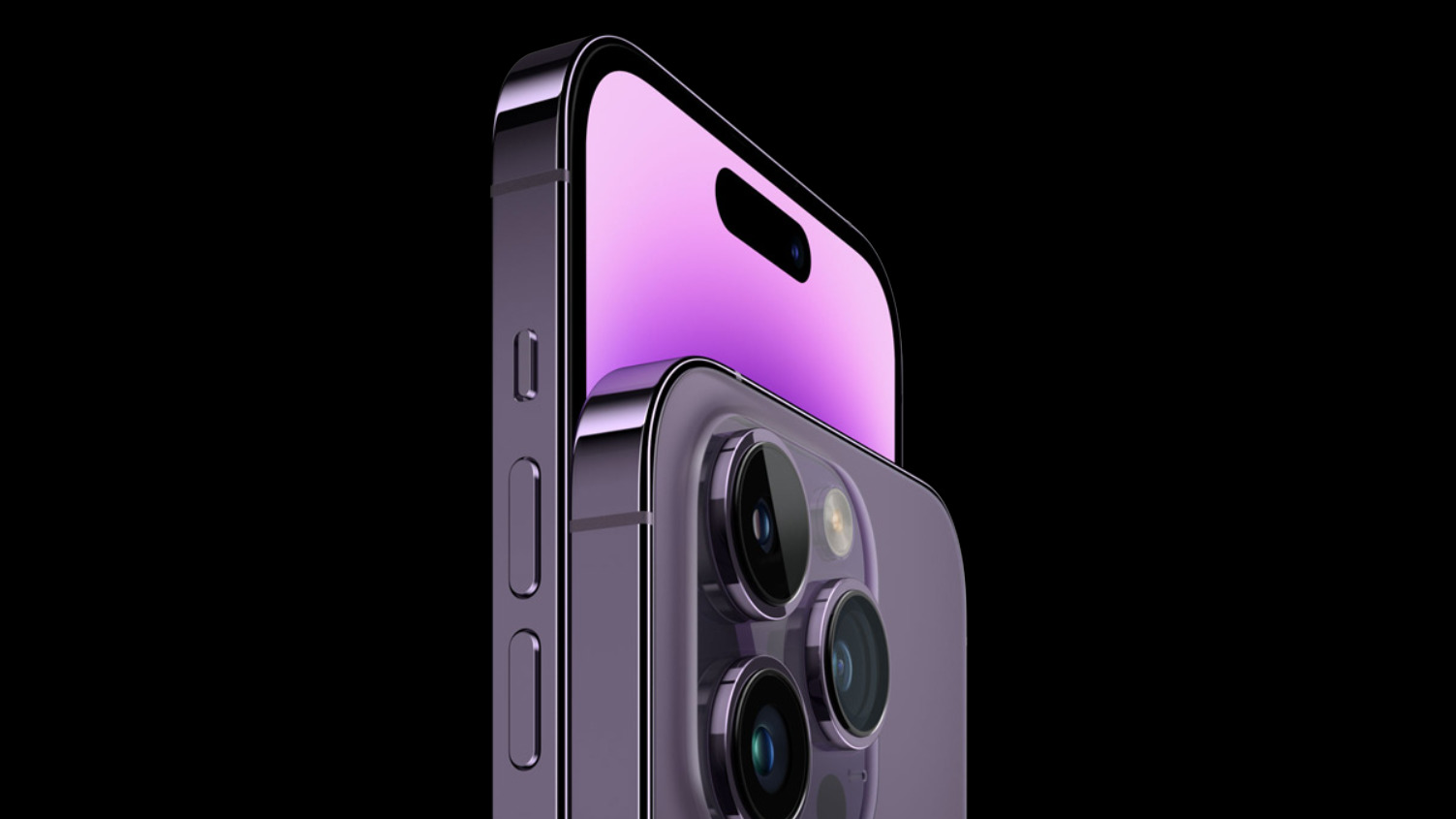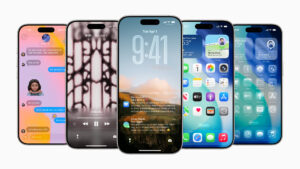After months of iPhone 14 rumours and some truly wild speculation, Apple has finally lifted the lid on the Californian company’s newest flagship phone. Announced at a special Apple event (Apple ‘Far Out’) streaming live from the Steve Jobs Theatre at the company’s Cupertino headquarters, the new iPhone 14 models look like another solid win for the tech giant. Importantly, they seem like much more than the iterative change some cynics were expecting, with features such as a new Dynamic Island notch – blending software and hardware in a clever way – and a 48-megapixel camera for the two Pro models. Some of the rumours turned out to be true, and some turned out to be true-ish.
As per the previous few years, Apple is offering two “base” models – the iPhone 14 and the all-new iPhone 14 Plus – and two “Pro” models – the iPhone 14 Pro and iPhone 14 Pro Max.
The three main takeaways? These are the brightest displays for an iPhone, ever. The Dynamic Island on the Pro models is a change-changing way to play around with the notch, finally finding a way to get rid of that pesky display black-out spot and turning it into a shape-shifting notification centre. And yes, that 48MP main camera on the Pro models should mean much better photography with more detail and better low-light performance.
The one worst takeaway? Apple is getting rid of the SIM card tray and moving towards eSim. This is a pain point for international travellers as you can no longer just grab a physical SIM overseas and place it in the phone. Although this may just be a matter of adapting for the consumer, given QR codes are now widely used by mobile phone service providers.
Here’s everything Apple just announced for the new iPhone, which was revealed alongside the new Apple Watch 8 models and – as speculated – the show-stealing Apple AirPods Pro 2. And yes, the below guide to the new iPhone announcement includes the highly anticipated iPhone 14 Pro and iPhone 14 Pro Max release date in Australia.
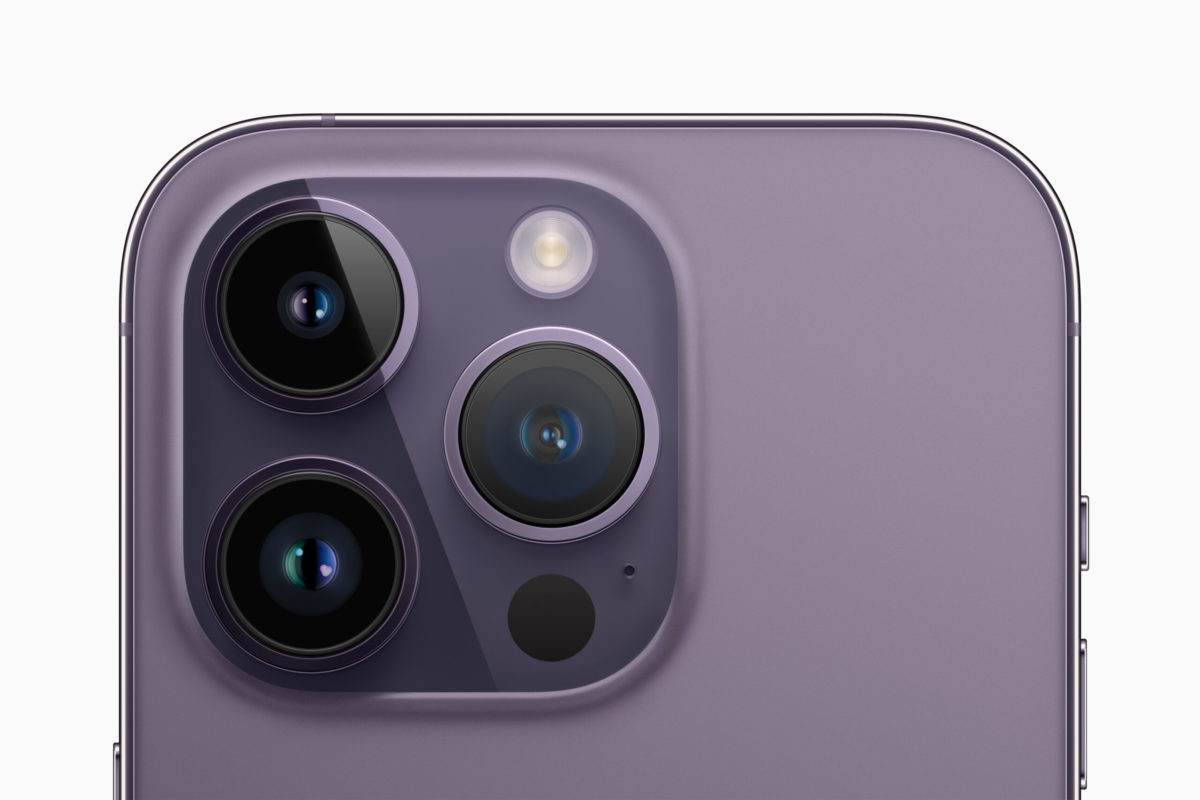
iPhone 14 Details – Table Of Contents
- iPhone 14 Australia: Release Date
- iPhone 14 Australia: Price
- iPhone 14 Australia: Pre-Order Details
- iPhone 14 Australia: Trade-In Details
- iPhone 14 Summary – Everything You Need To Know
- Design & Display
- Cameras
- Chipset & Performance Specs
- Our Thoughts
- Other Apple Announcements
- iPhone 14 Announcement – Frequently Asked Questions
iPhone 14 Australia Release Date
The iPhone 14 was announced on September 7, 2022 and as expected the iPhone 14, iPhone 14 Pro and iPhone 14 Pro Max will be released on September 16, 2022. Following that, the iPhone 14 Plus will be available in Australia from October 7, 2022.
This is the exact timeline iPhone rumours speculated in the weeks leading up to the Apple ‘Far Out’ event, which was streamed live across the world from The Steve Jobs Theatre in Cupertino. The Apple iPhone launch event also included details about the Apple Watch Series 8 and the AirPods Pro (Second Generation).
iPhone 14 Australia Price
The most affordable new iPhone 14 will go on sale in Australia for $1,399. That represents a bit of a price hike over the iPhone 13, which started at $1,349 on launch. There was also the iPhone 13 Mini last year, which started at $1,119. But overall, it seems fairly reasonable given the substantial upgrades.
Here’s a quick price breakdown of all the new iPhone models based on storage capacity, including the most expensive 1TB iPhone 14 Pro Max which will be priced at $2,769 in Australia.
iPhone 14 Price
- iPhone 14 128GB – $1,399
- iPhone 14 265GB – $1,579
- iPhone 14 512GB – $1,899
iPhone 14 Plus Price
- iPhone 14 Plus 128GB – $1,579
- iPhone 14 Plus 256GB – $1,749
- iPhone 14 Plus 512GB – $2,099
iPhone 14 Pro Price
- iPhone 14 Pro 128GB – $1,749
- iPhone 14 Pro 256GB – $1,899
- iPhone 14 Pro 512GB – $2,599
- iPhone 14 Pro 1TB – $2,599
iPhone 14 Pro Max Price
- iPhone 14 Pro Max 128GB – $1,899
- iPhone 14 Pro Max 256GB – $2,099
- iPhone 14 Pro Max 512GB – $2,419
- iPhone 14 Pro Max 1TB – $2,769
iPhone 14 Australia Pre-Order Details
Australians will be able to pre-order all four new iPhone models from this Friday, September 9. As mentioned above, the iPhone 14, Pro and Pro Max will be available in Australia from Friday, September 16.
Those who order the Plus will have to wait a bit longer, as the newest phone in the iPhone lineup will be available in Australia from Friday, October 7.
iPhone 14 Australia Trade-In Details
As always, now that the new iPhone models have been announced, those with older models looking to trade-in and upgrade are advised to take part in the trade-in program rather than just buy a new iPhone altogether.
Apple has announced details for Aussie customers as to what value is attached to what trade-in model. They are as follows (model / trade-in value)
- iPhone 13 Pro Max | Up to $1,105
- iPhone 13 Pro | Up to $935
- iPhone 13 | Up to $700
- iPhone 13 Mini | Up to $595
- iPhone 12 Pro Max | Up to $790
- iPhone 12 Pro | Up to $695
- iPhone 12 | Up to $520
- iPhone 12 mini | Up to $410
iPhone 14 Summary – Everything You Need To Know

- The standard iPhone 14 will continue with the 6.1-inch display while the Plus gets a larger screen with a 6.7-inch display. As per rumours, there will be no iPhone Mini, with Apple officially retiring the “budget” variant.
- Both the standard and Plus base models get the Apple Silicon A15 Bionic processor and a 5-core GPU for better performance.
- The Plus will have the “best battery life ever” of a standard iPhone model.
- The front-facing TrueDepth camera for standard and Plus will, for the first time, get autofocus and improved low-light performance.
- The primary camera on the rear for the two base models has been upgraded to 12MP.
- There is improved battery life on all four models thanks largely to better power efficiency.
- A new feature called Crash Detection will automatically detect if a user has been in a car accident and use a satellite connection – as opposed to a cellular network – to notify emergency services of the exact location.
- The two Pro models – Pro and Pro Max – get the latest A16 Bionic processor.
- Both Pro models also get a 48MP primary camera on the rear with Photonic Engine software for better computational photography and more detail retention.
- ProMotion remains, meaning both the Pro and Pro Max will have incredibly fluid displays. For the Pro, that means a 6.1-inch display and for the Pro Max that means a 6.7-inch display.
- The notorious notch on the Pro models will be replaced by Apple’s latest innovation, the show-stealing Dynamic Island which, according to the company, “maintains an active state to allow you easier access to controls with a simple tap-and-hold. Ongoing background activities like Maps, Music, or a timer remain visible and interactive.” This basically means that the notch can change shape and morph depending on the context, bringing a sense of liveliness to the display and changing as a function of the user’s needs.
- All four phones now get Crash Detection, which in the event of a severe car crash immediately hooks up to satellite instead of relying on cellular, notifying emergency services of the user’s location. The reliance on satellite connectivity, however, is an entirely new issue for another article.
- Apple has ditched the physical SIM card tray on all four phones and is now using eSIM exclusively.
- The iPhone 14 and iPhone 14 Plus are available in five colours: midnight, starlight, blue, purple and product red.
- The iPhone 14 Pro and iPhone 14 Pro Max are available in four colours: Space Black, Silver, Gold, Deep Purple.
Design & Display
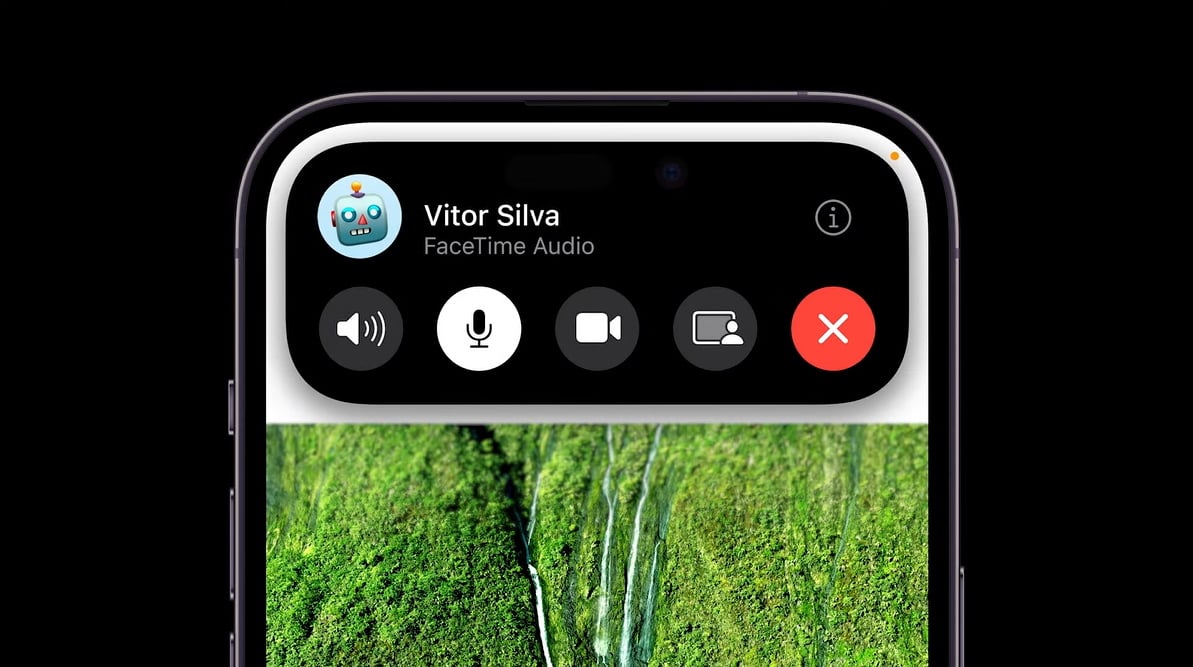
iPhone 14 and iPhone 14 Plus Design
With feature sets that are almost identical, the only real difference between the standard and Plus is size. the standard delivers a compact 6.1-inch display while the Plus has a bigger 6.7-inch display for anyone who wants more real estate and a larger canvas.
The iPhone base models look almost identical to the iPhone 13 base models. You’ve still got a diagonal camera bump on the rear and the same slim notch on the display. The only disappointing difference is the disappearance of the physical SIM tray – the new iPhone is an eSIM-only phone.
Unfortunately, neither of the “Base” iPhone models offers anything more than a standard 60Hz refresh rate on the display. This means the Pro models are the way to go if you want a more fluid experience, seeing as both the Pro and Pro Max retain Apple’s popular ProMotion 120Hz adaptive refresh rate.
Both the standard and the Plus have Apple’s Super Retina XDR OLED display with a peak HDR brightness of 1,200 nits. This should make colours really pop and streaming look incredible, as well as retain clarity for the display in bright conditions.
The phones feature a sturdy Ceramic Shield on the front glass, included for drop protection and more durability.
iPhone 14 Pro and iPhone 14 Pro Max Design
Both new iPhone Pro models now have the highly-touted Always-On Display as well as the innovative Dynamic Island notch. This plus the first-ever 48MP primary camera on an iPhone should make upgrading worth it for iPhone 13 users.
Apple’s Pro and Pro Max are coated in a surgical-grade stainless steel body with flat edges and a textured matte glass design available in four different colours (Space Black, Silver, Gold, Deep Purple). The Pro has a 6.1-inch screen while the Pro Max maxes out with a 6.7-inch screen, both of which are Apple’s super crisp XDR Retina XDR display with a fluid ProMotion adaptive refresh rate that can dip as low as 1Hz to enable the Always-On Display without draining the battery.
This means that the Lock Screen is no longer just a dump for endless notifications, displaying time, widgets and Live Activities that light up when you go to look at the phone.
Apple has upped the brightness considerably for the Pro models, pushing it up to 2,000 nits which is the highest outdoor peak brightness in a smartphone to date – twice as much as the iPhone 13 Pro. Theoretically, this should make glare a thing of the past and be a welcome addition for the more adventurous iPhone users who are constantly outdoors.
The headline feature is Dynamic Island, which is a completely new way to view a smartphone notch – oddly always the most controversial feature of any phone’s display. With Dynamic Island, Apple has married hardware with software in an incredibly clever way, featuring a design that adapts to real-time use and shows important alerts and notifications by essentially changing the shape of the notch as needed.
Apple is marketing this as an “active state” notch, which gives you easier access to controls and features ongoing background activities like maps, music, timers and third-party apps in iOS 16. This does away with the display notch, with the standard form being a pill-shaped display cut-out.
Unfortunately, Apple is sticking with the Lightning Port on all four new iPhone models. This has been standard for Apple’s mobile phones for years now which begs the question if Apple will ever shift to using USB-C.
Cameras

iPhone 14 and iPhone 14 Plus Cameras
The standard and Plus have identical camera systems, with the primary 12MP camera on the rear handling bigger pixels (1.9 µm pixels) with a larger sensor and faster f/1.5 aperture plus sensor-shift image stabilisation. The changes represent a 49% improvement in low-light performance with exposure in Night Mode apparently twice as fast as in the standard iPhone 13, as well as improvements in motion freezing, faster exposure times and less noise.
Apple’s popular ultrawide camera seems to not have changed much for the base models but the new Photonic Engine software should help improve low-light performance.
The front camera sees the biggest change here. It’s now a TrueDepth camera with a speedy f/1.9 aperture to unlock better low-light performance for both photos and videos. For the first time, the front camera gets autofocus which when combined with TrueDepth builds a hybrid focusing system that should make any selfies look much, much better.
Both phones are able to shoot Cinematic Mode at 4K, 30 fps and 4K, 24 fps which makes things much more versatile for content creators. That goes double when you consider the new Action Mode, which has been designed for smoother videos that adjust to any shakes, motion or vibrations to put more focus on Apple’s built-in stabilisation system and a nod to a generation that’s increasingly capturing video with plenty of movement. Whether or not it completely eliminates the need for a gimbal (we doubt it) remains to be seen.
Finally, the cameras are able to capture end-to-end Dolby Vision HDR for vivid video playback, which is an impressive claim. We’ll see how it tracks when we get our hands on the iPhones in the coming week.
iPhone 14 Pro and iPhone 14 Pro Max Cameras
The headline here is that the iPhone Pro and iPhone Pro Max both get a fancy new 48MP main camera on the back – the first-ever for an iPhone. This combined with the new ProRAW mode means you can now capture uncompressed 48MP photos for more options when you’re editing. You can also capture video at 4K, 30 fps. Apple still, however, has a way to go before we’re shooting in 8K, but this is a minor complaint seeing as 8K isn’t quite as widespread yet anyway.
Importantly, something like ProRAW mode typically isn’t standard even on flagship phones from other companies. Regardless, it will be interesting to see how other future brands mirror this.
I’m expecting the new 48MP shooter to enable higher resolution photos with much more detail – perfect for travellers and content creators – as well as better low-light performance. Binning of course means that you’ll end up with a sensibly sized 12MP photo, but the 48MP camera means you’ll get more detail and a lot more light into that photo before the pixels are combined.
Sensor-shift optical image stabilisation has been tightened in preparation for the new Action Mode, detailed above.
There’s still no digital zoom for 4K videos but the 48MP camera should make it easier to engage the Telephoto lens for 2x zoom without worrying about the results. The zoom uses the middle 12 MP of the main sensor for a full-resolution photo.
Photonic Engine software should help greatly with computational photography. Whether or not this means a Portrait Mode that can finally muscle out Google’s Pixel phones remains to be seen. But we do know the new software will apply Deep Fusion earlier in the imaging process to better help with detail and retain more subtle textures for a better result, translating to more colour and information in the photo.
The 12MP Ultra Wide camera upgrades to 1.4 µm pixels, while the Telephoto camera is now capable of 3x optical zoom. As mentioned above, the front-facing TrueDepth camera gets a big change with autofocus.
Much like the base models, the Pro models can now shoot Cinematic mode at 4K, 30 fps and 4K, 24 fps to give “creators” more options as they capture end-to-end Dolby Vision HDR content.
A lot of the Pro features were interestingly missed by all the many iPhone 14 leaks and iPhone news that were thrown across the internet over the past few weeks, even from publications like the tech world’s leading digital publisher, Tech Radar and Tom’s Guide.
Chipset & Performance Specs
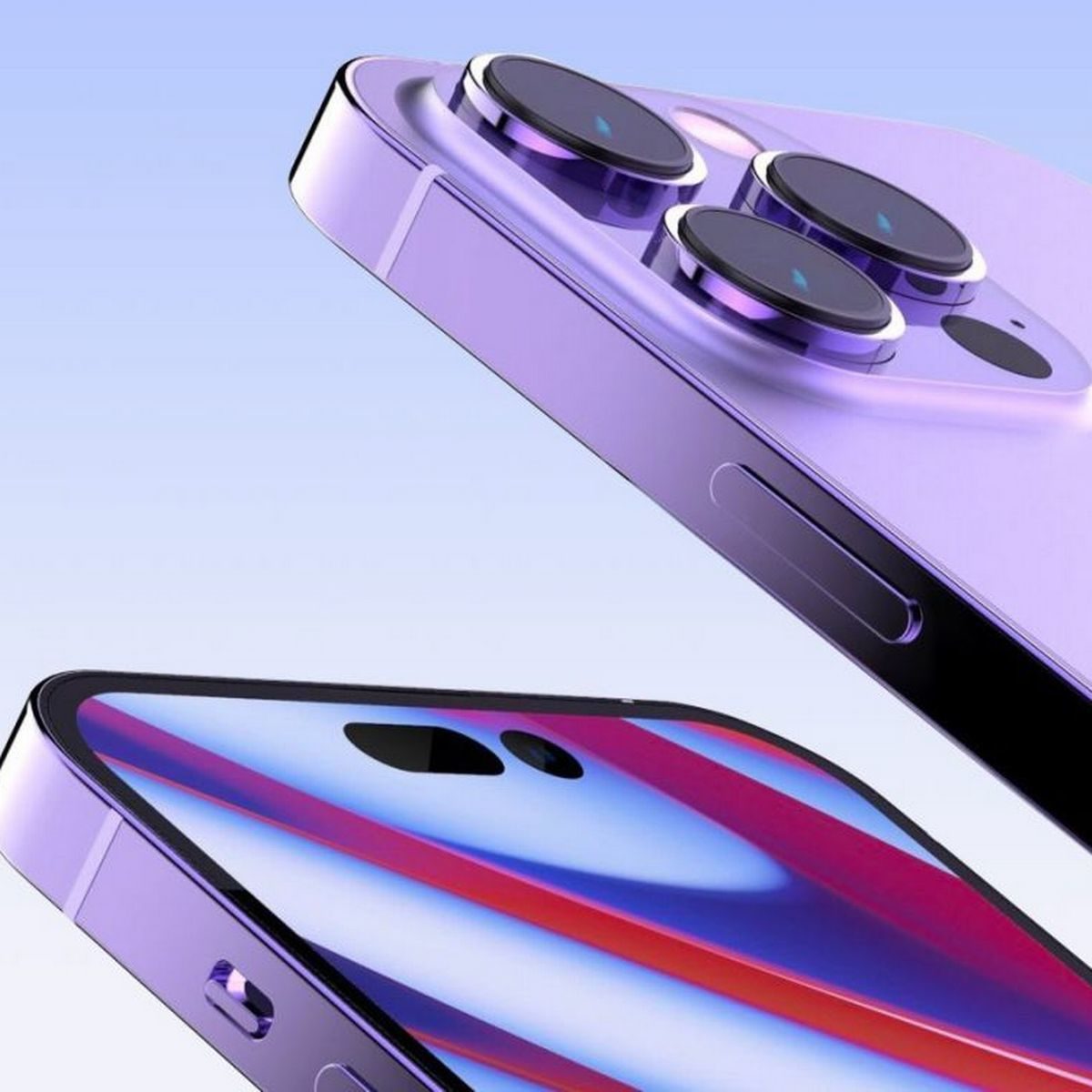
iPhone 14 and iPhone 14 Plus Chipset & Performance Specs
The base iPhone models make do with Apple’s A15 Bionic chip combined with a 5-core GPU to enable for smooth, crisp graphics when users are engaging with video apps or high-performance gaming.
Using a 6-core CPU, the chipset should be able to power through heavy tasks quite well. We don’t doubt this, as the iPhone 13 really expressed how nifty Apple has been lately when it comes to power efficiency, and this new chipset is said to best that with a 16-core Neutral Engine capable of 15.8 trillion operators per second. That means faster machine learning for both core functions and third-party apps.
As always, Apple hasn’t really specified the size of the battery but the company does promise to deliver the “best battery life ever” on the iPhone. It’s a bold claim, and an obvious one, but I wouldn’t be surprised if it’s still the same battery from the iPhone 13 just with more efficient power usage thanks to the Bionic A15 chipset.
iPhone 14 Pro and iPhone 14 Pro Max Chipset & Performance Specs
While the standard and Plus get the A15 Bionic Chip that last year’s Apple 13 Pro used, the 14 Pro models up the game with Apple’s A16 Bionic chip. Apple claims this is “generations ahead” of the competition, necessary to offer more power to enable features like the Dynamic Island notch and provide a more reliable all-day battery life while tightening up the computational photography and its more demanding 48MP camera.
The chipset features two high-performance cores and four high-efficiency cores, making for a 6-core CPU that is up to 40% faster than “the competition.” Apple combines this with an accelerated 5-core GPU that it claims has 50% more memory bandwidth than the previous model for intensive gaming and more demanding apps.
The new 16-core Neural Engine is capable of almost 17 trillion operations per second and 4 trillion operations per photo. Seeing how this handles in real life should be interesting, with the specs all sounding like Apple will finally be able to go toe-to-toe with the computational photography prowess of Google and Samsung.
As always, Apple reveals no battery sizes but, as above, power efficiency should mean that we get a much more reliable all-day battery life despite the extra demands on speed and graphics placed by added features like Always-On Display, Dynamic Island and a more powerful camera system.
Our Thoughts
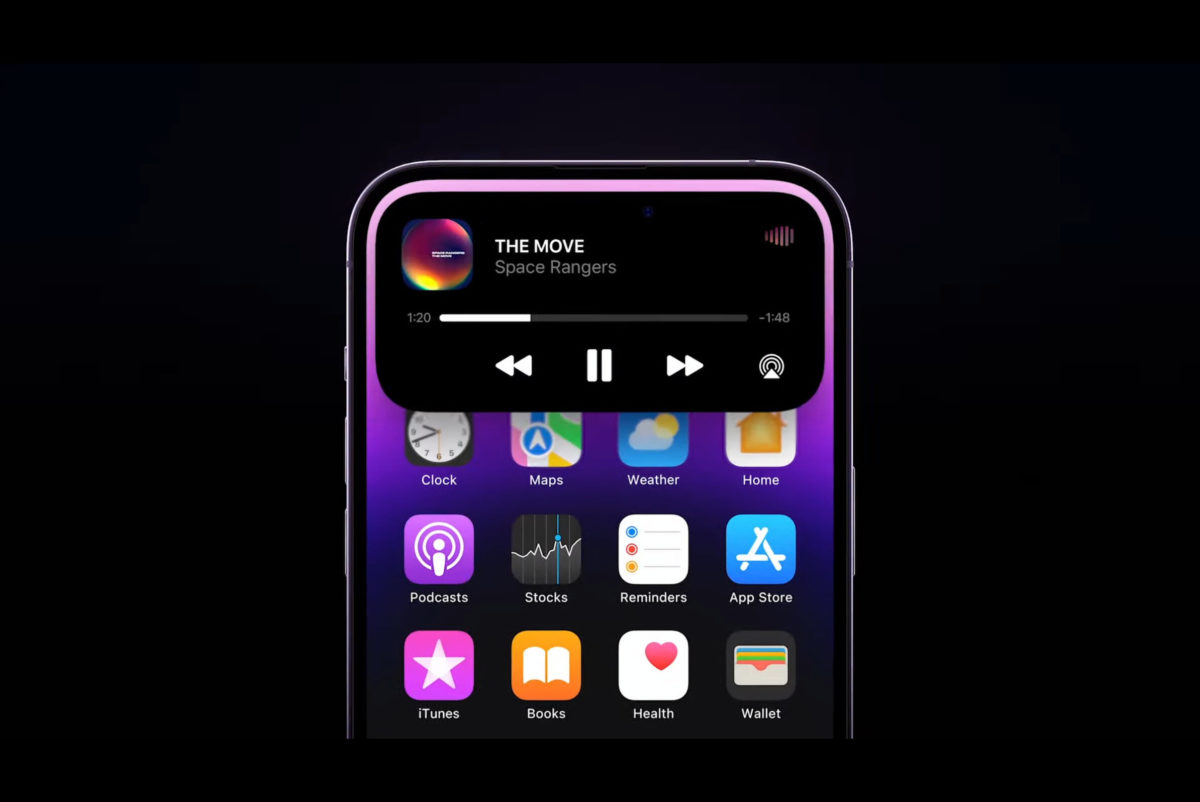
I wasn’t really expecting this. There was plenty of talk about what Apple would do with the notch in the lead-up to the new iPhone announcement, but no one really predicted that the company would pull a genuine innovation and finally find a way to get rid of the notch altogether, profoundly changing the way it functions as part of the display. Yes, the Dynamic Island notch is a bit of a game-changer here and Apple does deserve a round of applause for making this happen.
Although the Dynamic Notch can only be found on the Pro models. Both are substantially more expensive than the standard models so Apple really makes you pay if you want the innovations.
Not that the Base models seem to be much of a compromise anyway. Yes, you’re missing out on the headlines like Dynamic Island and a 48MP shooter, but you’re still getting a great deal of Apple’s progressive approach to smartphones, including Crash Detection, a much brighter screen and Action Mode. Get the Plus and you’ve got a nice 6.7-inch screen, but the 6.1-inch screen for the standard iPhone is probably more manageable for most people’s hands.
My biggest disappointment is with the removal of the physical SIM tray. Yes, Apple’s decision to delete the headphone jack from the previous few generations initially caused an uproar but was soon placated with the proliferation of truly wireless earbuds. How will providers move to make the transition to eSIM more seamless, especially for those travelling internationally? I don’t know but for those leaving overseas shortly after the new iPhone launches (eg, me), it’s incredibly annoying.
I’m genuinely excited to get my hands on the Pro (I’ve always preferred the 6.1-inch display) so stay tuned for our official review of the model before the Australian release date of Friday, September 16.
Other Apple Announcements
Apple also dropped two additional announcements at its ‘Far Out’ event this morning. Check them out.
iPhone 14 Announcement – Frequently Asked Questions
When is the iPhone 14 out in Australia?
The iPhone 14, Pro and Pro Max will be available in Australia from Friday, September 16. The all-new Plus model will be available from Friday, October 7.
Will there be an iPhone 14 mini?
No. Apple has decided to completely to get rid of the mini variant due to underperformance in the market. The fourth iPhone in the new lineup will be the iPhone 14 Plus.
How much will the iPhone 14 cost in Australia?
The most affordable iPhone 14 (the iPhone 14, 128GB) will cost $1,399 in Australia. The most expensive iPhone 14 (iPhone 14 Pro Max, 1TB) will cost $2,769 in Australia.
When can you pre-order the iPhone 14?
Pre-orders for all new iPhone 14 models start from Friday, September 9.
